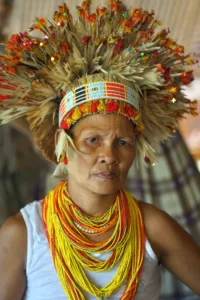India is a country with so many different traditions and customs. Here tribal people have long coexisted with the general populace. This coexistence has, however, not always been without difficulties because there can occasionally be disputes brought on by differences in practices, beliefs, and customs. Building a cohesive and inclusive society depends on resolving these disputes and encouraging harmony between tribal and mainstream populations. In this article, we will examine original and creative suggestions for bridging the gap between these cultures and encouraging mutual respect, understanding, and cooperation.

Community exchange initiatives: Community exchange initiatives have the power to radically modify how indigenous and mainstream communities interact. People could get fully immersed in the various traditions, and the ways of life of the other group by organizing visits and exchanges between members of both groups. These interactions encourage empathy and understanding, open communication, and the eradication of stereotypes.
A tribal family from a remote hamlet might visit a modern metropolis to experience urban life, while a family from the outside world might move in with a remote tribe to learn about their sustainable agricultural methods and traditional crafts. These first-hand encounters strengthen linkages throughout communities, create bonds that remain beyond the exchange, advances mutual respect, understanding, and collaboration.

Storytelling and Creative Expression: For thousands of years, storytelling and creative expression have been essential to human communication. By encouraging tribal and main stream people to share their stories, myths, and experiences through art, music, dance, and literature, we can open doors for emotional expression and intercultural understanding.
Such artistic creations can be presented at local festivals and events, allows individuals of both communities to display their skills and cultural heritage. For instance, a storytelling festival may showcase both modern fiction written by well-known authors and tales from tribal folklore, honoring the great range of storytelling customs in India.
Intercultural Festivals: Intercultural festivals offer a wonderful chance to promote harmony while celebrating the diversity of tribal and mainstream cultures. Traditional dances, crafts, foods, and rituals from both communities might be featured at these events, weaving a colourful tapestry of cultures.
A concert featuring popular classical music and a tribal dance company, for instance, can highlight the distinctive aesthetic expressions of both ensembles. These festivals include seminars where attendees can acquire traditional skills in cooking or crafting, encouraging respect for one another’s cultural history.

Digital Inclusion: In the current digital era, technology may be a critical tool for bringing people from various backgrounds together. By embracing digital tools and online communities, tribal and mainstream communities can work together and interact beyond geographical boundaries.
Virtual conferences and webinars can encourage the sharing of ideas and best practices by facilitating discussions on common issues and possibilities. Social media groups can act as spaces for open discussion and knowledge exchange, promoting connections between people who might not have otherwise had the chance to interact.
Collaborative Conservation Projects: Conservation programs that involve collaboration between tribal and mainstream groups can help them establish common ground and advance common objectives. Environmental conservation is a problem that affects all types of communities. These initiatives could be geared at defending regional ecologies, preserving biodiversity, and advancing sustainable lifestyles.
For example, both indigenous and mainstream people could actively participate in planting and caring for saplings as part of a collaborative endeavour to reforest degraded areas. Together, they can rebuild the natural ecosystem, lessen the effects of climate change, and foster a greater sense of environmental care.

Community Mediation Centre’s: While conflicts are inescapable in any societies, keeping peace requires finding a peaceful solution to them. Conflict resolution can take place in a neutral setting at community mediation centers staffed by experienced mediators with backgrounds in both tribal and mainstream cultures.
These facilities are capable of resolving disputes over land, resources, or cultural issues through discourse and negotiation methods. These centers can promote understanding and inspire compromise by giving both sides the opportunity to voice their complaints and concerns.
Joint Skill Development projects: Supporting joint skill development projects can improve both tribal and mainstream communities’ economic well-being. Both individuals from the two groups can increase their employment prospects and financial potential by receiving training in transferable skills.
For instance, tribal farmers would be able to take classes in contemporary agricultural methods while mainstream youngsters might learn traditional artisanal crafts at a vocational training centre. Both communities can gain from expanded economic prospects and reciprocal assistance by respecting each other’s abilities and knowledge.

Integration of Indigenous Knowledge: Indigenous knowledge is crucial for maintaining customs and encouraging sustainable living. The quality of life for both tribal and mainstream populations can be improved by recognizing the significance of this information and incorporating it into mainstream practices.
For instance, conventional agricultural practices can incorporate indigenous farming techniques employed by tribes, such organic farming and agroforestry. This helps promote environmentally responsible and sustainable farming practices in addition to preserving age-old knowledge.
Participatory Governance: Participatory governance is essential to ensuring that tribal leaders’ opinions are heard and their issues are taken into consideration during local government and decision-making processes. Participatory governance can strengthen tribal communities by giving them a voice in crafting the laws that have an impact on their daily life.
An inclusive and fair decision-making process can be ensured, for example, by the inclusion of elected representatives from both indigenous and mainstream populations on a village council. This strategy encourages cooperation and collaboration, resulting in more efficient and equitable governance.

Cultural Sensitivity Training: Promoting cultural sensitivity training among public servants, educators, and other important stakeholders helps reduce cultural barriers and foster polite relationships. In order to avoid unintentional disputes and misunderstandings, it is essential to comprehend and respect cultural nuances.
The history, traditions, and practices of tribal cultures can be taught to people through workshops and training sessions. Increasing empathy and adopting a more open-minded perspective can result from making mainstream culture more aware of the difficulties experienced by tribal societies.
Conclusion:
A distinctive feature of India’s cultural fabric is the coexistence of tribal and mainstream communities. While embracing novel and creative solutions can promote comprehension, cooperation, and mutual respect, disputes and challenges sometimes develop because of variations in cultures and beliefs. We can close the gap between these communities and build a more cohesive and inclusive society by encouraging cultural interaction, creative expression, and collaborative projects. Together, we can create a future in which the tribal and mainstream populations coexist peacefully, honoring their shared heritage and adding to India’s rich cultural diversity.
———————————————————————————–
Ikigai and Beyond: Unlocking the Japanese Keys to Lasting Happiness.
Beyond Borders: How Learning an International Language Can Transform Your Career.

